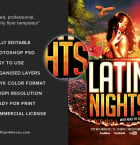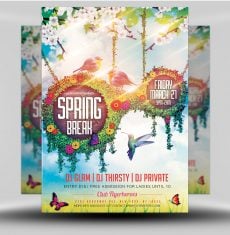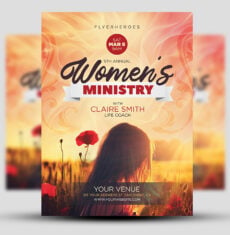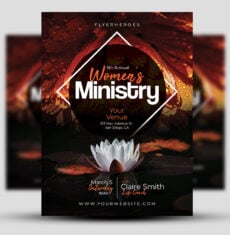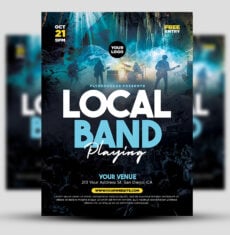Latin Nights Beach Flyer Template
Latin Nights Beach Flyer Template is a colourful, tropical, bright and vibrant beach flyer template, suitable for promoting tropical beach events, latin nights and more..
See also: All Latin Flyer Templates for Photoshop
Filled with palm trees, tropical birds and a beach photograph filling up the background, this flyer design definitely packs a warm and tropical feel. Maybe break out the Malibu?
A well organised and colour coded layer structure makes changing images placeholders and text areas quick and easy.
Image areas and text sections are very easy to edit and replace.
View related Flyer Templates:
- Salsa Flyer Template
- Latin Fridays Flyer Template 2
- Latin Nights Beach Flyer Template
- Sexy Latin Tuesdays Flyer Template
- Reggaeton Flyer Template
What fonts do I need for this template?
General information:
Latin Nights Beach Flyer Template is a premium Photoshop PSD flyer / poster template designed by FlyerHeroes to be used with Photoshop CS4 and higher.
Once you have purchased this flyer template, you are free to make any customisations and modifications you wish.
You are also granted an Unlimited Use and 100% Royalty Free License meaning you can use this product as many times as you wish for as many clients as you wish. You are free to use this product in both personal and commercial work.
You can read more on our File Licenses here and our File Requirements here.
Please note, stock models / photographs of people are used for demonstration purposes only and are not included in the final download. We do however include a blank placeholder layer to make using your own stock photos as easy as possible.
If you have any further questions, please feel free to direct your questions to FlyerHeroes Support.




